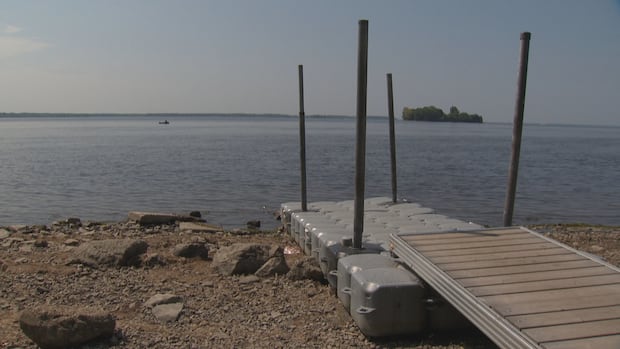With sweltering heat and little rain in sight, Montrealers should consider how they’re using the city’s drinking water supply, says city councillor Maja Vodanovic, who handles the water file at the executive committee.
In the Pierrefonds-Roxboro borough, residents will need to reduce their water consumption until further notice following a watering ban issued Monday evening.
Residents served by the Pierrefonds drinking water production plant, namely those in Dollard–des–Ormeaux, Senneville and Sainte-Anne-de-Bellevue, will be banned from using water for various outdoor purposes, including watering the lawn, washing vehicles, spraying down driveways and alleys and filling existing pools in order to maintain the quality of drinking water.
“This advisory is due to the poor water quality of the Rivière des Prairies, caused by a drop in water levels,” the notice issued by the city reads.
As a result, the treatment plant for producing drinking water is under strain. However, the city says the quality of tap water remains “excellent.”
“We don’t have a shortage of water, but it could happen if there’s no rain for a really long period of time that we have problems in certain spots,” said Vodanovic in an interview earlier Monday.
Montreal is one of several Canadian cities experiencing “excessive heat” Monday, says Environment and Climate Change Canada (ECCC) senior climatologist David Phillips.
Temperatures in the city are expected to reach 34 C until Tuesday, though the humidity, exacerbated by a high pressure system, will make it feel like 40, according to ECCC.
With temperatures exceeding 30 C and little rain in sight, the heat is putting some pressure on the city’s water treatment plants. City officials say Montrealers should consider how they’re using the city’s drinking water supply.
“It is this Bermuda High, it’s a large ridge that is sitting like a lid over top of … eastern Canada and it is absolutely not letting any circulation in, it’s why we’re seeing such drought conditions,” said Phillips.
In the St. Lawrence River, the heat and low precipitation rate has brought the water level down to its lowest in four years. On Sunday morning, the water level in eastern Montreal was 4.1 metres — 60 centimetres below the median.
Vodanovic calls the dip concerning because it makes treating the water more expensive and chemical-intensive.
“Less water means less dilution, so everything that is industrial discharge, sewer discharge, will of course be more concentrated in the raw water that we take into our plant and [make] the treatments more arduous,” she said.
They also use chemical products to neutralize the taste of algae which can be stronger when the water level is low, she says.
The river level is 60 centimetres below average — the lowest it’s been in four years. That’s impacting drinking water and even business at the Port of Montreal.
Low water level on the St. Lawrence also stalls traffic on the seaway, adds Vodanovic. Cargo ships cannot maximize their load if they risk dragging on the seabed.
“So, there’s less commercial exchange with Ontario, with the United States, so there’s an economic cost that’s very significant for the country she said.
Vodanovic says she’ll be hoping for rain soon, and in the meantime: let your patch of grass go yellow.
“It’s OK…grass doesn’t die even if it’s yellow,” she said.








